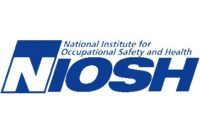From the NIOSH Director’s Desk
A Look at the NIOSH Emergency Preparedness and Response Office for National Preparedness Month

September is National Preparedness Month and the current response and recovery efforts for Hurricane Harvey remind us of the importance of being ready for emergencies and disasters. This unprecedented event will demand a long term commitment to the recovery of the affected areas in Texas and Louisiana. It also underscores the importance of keeping responders and volunteers who are working on recovery activities safe and healthy.
This is also the 15th anniversary of NIOSH’s Emergency Preparedness and Response Office (EPRO). NIOSH recognized the need for an office to coordinate emergency preparedness and response activities after the September 11, 2001, attacks at the World Trade Center and Pentagon, followed closely by the anthrax letter attacks.
EPRO plays a critical role in planning and coordinating NIOSH’s work to improve preparedness and response for all response workers ahead of the next disaster. When an emergency does strike, EPRO coordinates how our occupational physicians, epidemiologists, industrial hygienists, toxicologists, engineers, and others are mobilized to respond.
While we may not predict an emergency, we can prepare for them. NIOSH has guidance, resources, and tools to help employers, workers, labor unions, and professional organizations better prepare for a disaster before it happens, as well as resources that can be used during the response to protect the health and safety of response workers.
Even after immediate response activities end, workers continue to face hazardous conditions as recovery from a disaster begins. Recovery workers should be aware of the potential dangers associated with cleanup like electrical hazards, exposure to carbon monoxide from generators and hazardous materials, musculoskeletal hazards, structural instability, and confined spaces. The NIOSH Storm, Flood, and Hurricane Response topic pagehas information to help prepare for the potential dangers involved during clean-up and other recovery activities and the proper precautions to take to prevent work-related injuries and illnesses.
Additionally, recovery workers should also be mindful of stress and fatigue that are associated with working long hours while responding. To protect mental and physical health and personal safety while deployed, workers should do their best to maintain their own health and recognize the signs of stress and fatigue in themselves and their team members.
As a result of the well-documented health and safety deficiencies identified following the 2001 terrorist attacks, NIOSH—in collaboration with federal agencies, state health departments, and unions—created the Emergency Responder Health Monitoring and Surveillance (ERHMSTM) System. ERHMS is a framework that allows an organization to monitor the health and safety of emergency responders throughout the predeployment, deployment, and postdeployment phases of response in order to protect emergency responders from illness and injury. NIOSH recently developed ERHMS Info ManagerTM, a free, custom-built software product that allows for the collection of data across all phases of a response and can also be used for calculations and analyses. NIOSH has also developed a user’s manual and training videos to accompany the software. More information on ERHMS, free online training, and ERHMS Info Manager is available on our ERHMS website.
While some emergencies may be more difficult to predict than others, it is critical to be prepared to respond to many types of events and to be aware of resources available. We hope you find these resources helpful in your own organizations. While disasters don’t plan ahead, you can.
Looking for a reprint of this article?
From high-res PDFs to custom plaques, order your copy today!






